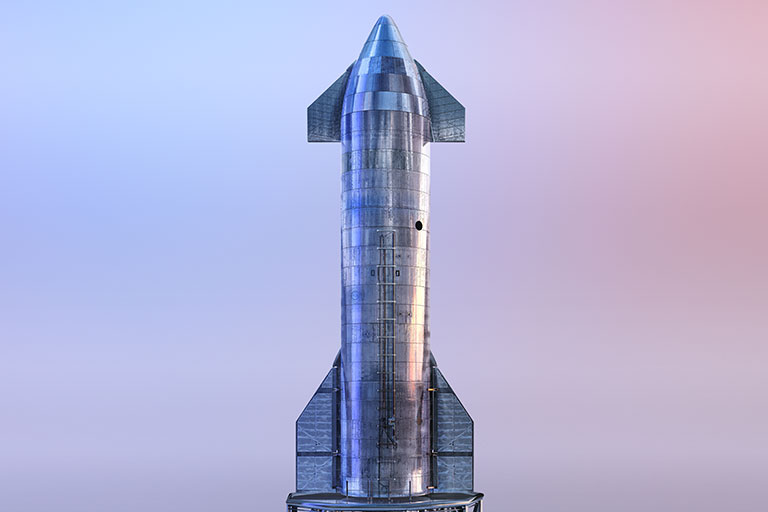In a first for a space programme, SpaceX is relying on the unique qualities of steel for its plans to make Mars colonisation a reality.
Founded in 2002 by Elon Musk with the aim of reducing space flight costs enough to make the colonization of Mars feasible, SpaceX is developing Starship – a fully reusable, privately funded launch system for interplanetary and orbital spaceflight.
What makes this rocket unique is the material chosen for the body of the Starship rocket and its Super Heavy Booster. Originally slated to be constructed from state-of-the-art carbon fibre, SpaceX announced that this would be replaced with gleaming 300-series stainless-steel.
This marks the first use of this material in a rocket since failed attempts in the Atlas intercontinental ballistic missile (ICBM) programme in the 1950s. With Starship intended for interplanetary travel, however, material selection is a significant factor in the success of Spacex’s attempts to reach the fourth planet from the sun.
 Stainless steel’s performance means the Starship can handle extremely high and extremely low temperatures
Stainless steel’s performance means the Starship can handle extremely high and extremely low temperatures
Made of the right stuff
Stainless-steel’s high melting point is a major advantage when it comes to space travel. Aluminium or carbon fibre are limited to a steady-state operating temperature of 150°C, with short periods operating at around 180-200°C, but which lead to a weakening of the material. Some carbon fibres can operate continuously at 200°C, but these come with compromises in strength.
Steels, with appropriate heat dissipation controls, can perform at temperatures as high as 820-870°C. As such, an innovative steel-built system will be used for the Starship’s heat shield, which protects the vessel from the high temperatures experienced during entry into a planet with an atmosphere such as Mars or Earth.
The heat shield features two stainless-steel layers joined with stringers, with water flowing between them. The exterior has micro-perforations which then allow for water to ‘bleed’ out, keeping temperatures low through transpiration cooling.
Lowering the cost of travel to Mars is crucial to the project’s overall success and here stainless-steel vastly outperforms its competitors. Carbon fibre costs $135 per kilogram, and more than a third of the material is scrapped during the production process, meaning the real-terms cost is around $200 per kilogram. The equivalent amount of stainless steel will set you back just $3.
 Stainless-steel’s incredible cost benefit and performance is vital to the success of SpaceX’s Mars mission
Stainless-steel’s incredible cost benefit and performance is vital to the success of SpaceX’s Mars mission
The weight of the world
When launching a vessel out of Earth’s atmosphere, every gram must be considered and eliminated where possible. Traditionally, steels would not be considered a lightweight option, but stainless-steel’s unique attributes actually make it the best choice for keeping weight down.
In the cold darkness of space, the temperature sits at a frosty -270°C. At these cryogenic temperatures, stainless steel’s strength is increased by 50%. The chrome-nickel content in its make-up means it does not become brittle even at very low temperatures.
For an interplanetary rocket, high ductility, high toughness, and very little chance of fractures when operating in cryogenic environments, makes for the perfect material. These properties mean that less material can be used, lowering the weight and making stainless-steel highly viable for space travel.
The Starship is designed for repeated use, with SpaceX claiming the vessel can be ready for relaunch just an hour after landing. With this in mind, the company’s materials team have been working on a new stainless-steel alloy with higher chromium content. This 304L alloy is even more resistant to both corrosion and degradation making it perfect for the continued re-use planetary colonisation would require
It’s clear that while the imagination and skill of SpaceX’s engineers and the bravery of the astronaut teams who pilot their creations will be driving this voyage into the stars, it is the enduring power of steel that is making human planetfall on Mars a very real possibility.
Images: Shutterstock